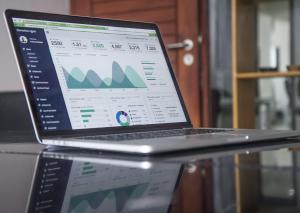Whatagraph moves to Google Cloud to continue to scale at pace
 Marketing tech startup Whatagraph goes through data to identify the trends and patterns that are important to its clients.
Marketing tech startup Whatagraph goes through data to identify the trends and patterns that are important to its clients.
According to Google, we create 2.5 quintillion bytes of data every day, and by the end of 2025 it is estimated that this will increase by 18,420 per cent, to 463 exabytes (quintillion bytes) each day. With so much data to sort through, pick out and analyse, it has become an increasingly difficult job.
Whatagraph has data from 40 different sources to process, so the company turned to Google Cloud to replace its legacy architecture.
"I see technology as enablers of products and new product features," said CTO Arturas Lazejevas "And I realised that our technology wasn't enabling the Whatagraph vision of simplicity and extendability. So we made the difficult decision to rebuild our architecture from scratch."
With Google Cloud, Whatagraph created an easy-to-use platform that is scalable and can grow with the business. It allowed Whatagraph to give a better service to its customers and to make great-looking reports to help marketing professionals visualise their data clearly and make fast, data-based decisions.
"In the current economic climate, that is an incredibly valuable thing," said Linas Zemaitis, Vice President of Marketing at Whatagraph. "For agencies, it's important not only to deliver value to your clients but to illustrate that value. With costs now being scrutinised a lot more, it is more important than ever to know that you are as efficient as possible in delivering the return on investment for your client and that you are able to tell that story to your client and prove your value. That's core to the survival of marketing agencies in the current environment, which is why reporting is more important than ever."
Since building a more sophisticated architecture, Whatagraph has been able to make use of Cloud Run and Cloud Tasks which gives it the agility to manage workloads and spike loads in traffic more efficiently. Whatagraph’s users often use its app at the same hour of the same day in a particular region which means it experiences a spike load in traffic, and extreme peak times can see around 1,000x more traffic than at the lowest points. Working with Google Cloud has meant that there has been no impact on Whatagraph’s customers' ability to access its reporting tools.
"With Cloud Run and Cloud Tasks, we're more in control of our workloads, because we can balance it out, expanding that peak from five minutes in an hour to 30 minutes," explained Arturas. "Which means those spikes and peak traffic are not so scary anymore. It's impressive how well-engineered it is."
Whatagraph's Google Cloud architecture has also freed up Arturas and his engineering team from time-consuming site maintenance so that they can focus on building the architecture that will enable Whatagraph to continue to scale at pace.







